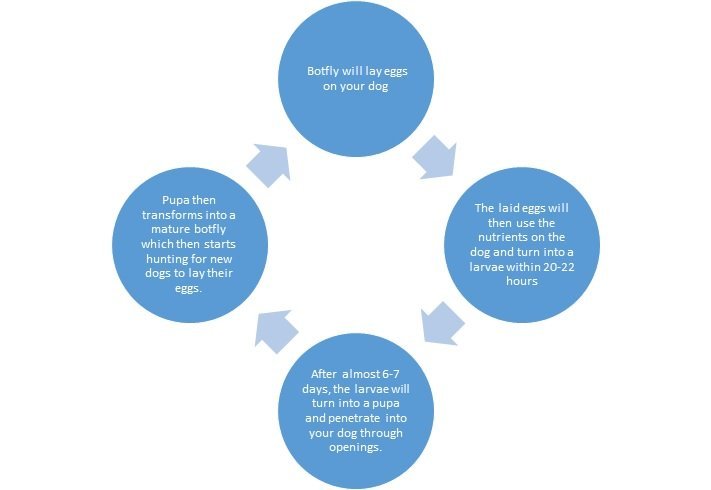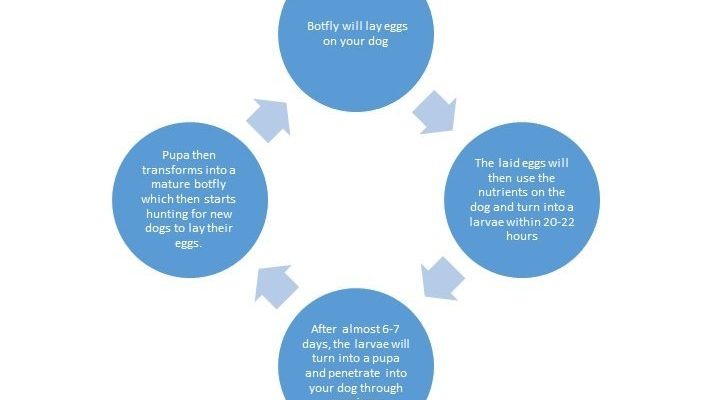
Wolf worms, the larvae of certain species of flies, aren’t something we often think about. Yet their lifecycle is a remarkable process that highlights the wonders of nature. Their journey starts small but takes them through several stages before they become adults. Understanding their lifecycle can open our eyes to the intricate ways life unfolds in the natural world.
The Egg Stage: A Tiny Beginning
Let’s kick things off with the very first phase of the wolf worm lifecycle: the egg stage. Imagine a tiny speck, often no larger than a pinhead. These eggs are laid in warm, moist environments where conditions are just right for growth. Typically, female flies deposit their eggs near or on host animals, ensuring that when the larvae hatch, they have an immediate food source.
You might be wondering why they choose this method. The answer is simple: survival. By laying eggs close to their food supply, wolf worms increase their chances of thriving from the get-go. Once the eggs hatch, the real adventure begins.
Hatching: The First Step into the World
When the eggs finally hatch, it’s a small but significant event. The larvae, looking quite different from their adult forms, slip out and make their way into the world. These young ones might resemble small, wriggling worms rather than the adult flies they will one day become.
At this stage, it’s all about feeding and growing. Wolf worm larvae are voracious eaters, consuming the tissues of their host animals. It’s a bit like a dinner party that has turned into a buffet! The larvae feed for several weeks, growing rapidly and preparing themselves for the next stage of their lifecycle.
The Larval Stage: Growth and Development
As the larvae continue to munch away on their hosts, they enter the larval stage of their lifecycle. This phase is critical for growth. Wolf worms can be found nestled within the tissue of their host, which provides them with all the nourishment they need.
During this time, the larvae undergo several molts, shedding their skin to accommodate their growing bodies. Each molt brings them closer to their adult forms. You can think of it like a kid outgrowing their clothes. The larvae need to shed their old “skin” to make way for new, bigger growth.
Feeding Frenzy: Why Diet Matters
The diet of wolf worms is crucial during this stage. They thrive on the nutrients found in the tissues of their host animals, which usually include mammals. Their feeding habits can sometimes lead to complications for their hosts, which can become weak or sick from the parasitic relationship.
Here’s the thing: while this stage may seem brutal, it’s part of nature’s cycle. Every creature plays a role, and wolf worms are simply doing what they need to do to survive and grow. And as they continue to develop, the next stage of transformation awaits them.
The Pupal Stage: A Time for Transformation
Once the larvae have grown sufficiently, they enter the pupal stage. This is where the real magic happens. The larvae find a safe spot, often in the soil or within the tissues of their host, and they begin to transform into pupae. During this time, they go through a remarkable metamorphosis.
Inside the pupal case, the larvae are busy changing. All those tiny cells start reorganizing, shaping the features of their future adult forms. It’s a bit like a caterpillar turning into a butterfly—what’s happening inside isn’t visible from the outside, but it’s an incredible process that sets the stage for a new beginning.
What’s Happening Inside?
Let’s demystify this stage a bit. Inside the pupa, the larval tissues break down, and new structures begin to form. Legs, wings, and other vital features start to emerge, waiting for the opportune moment to make their grand entrance into the world. This transformation period can last several weeks, depending on environmental factors like temperature and humidity.
It’s truly fascinating to think about what’s happening beneath the surface. The pupal stage is essential for the wolf worm lifecycle, allowing these creatures to emerge fully formed and ready to take on a new life above ground.
The Emergence: Breaking Free
After weeks of changes, it’s finally time for the adult wolf worm to break free. When the conditions are just right, the pupae will split open, and the adult fly will emerge. The first moments outside are crucial; they’ll pump fluid into their wings and prepare to take their first flights.
This emergence can be a vulnerable time. The newly emerged adult needs to find food and mates quickly to ensure the continuation of its species. It’s like stepping onto a stage for the first time—everything feels new and exciting, but there’s a lot of pressure to perform well right from the start.
The Adult Stage: Expanding the Lifecycle
Once they’re out in the open, adult wolf worms typically have a short lifespan, usually only a few weeks to a couple of months. Their main job during this time is to reproduce and lay eggs, ensuring the lifecycle continues.
It’s a fast-paced cycle: from egg to larva to pupa to adult. Each stage plays a critical role in maintaining the balance of nature and contributing to the ecosystem. So the next time you hear about wolf worms, you’ll have a better understanding of their complex and fascinating lifecycle.
Why Understanding Wolf Worms Matters
You might be wondering, why does it matter to know about wolf worms? Understanding their lifecycle helps us appreciate the diversity of life on our planet. Each creature, no matter how small, has a role in the ecosystem. Wolf worms, while they may seem unassuming, are part of a larger picture of life involving predator-prey relationships and decomposition.
Studying their lifecycle can also provide insights into ecological health, pest control, and conservation efforts. When we grasp how these creatures live, grow, and impact their environment, we become more equipped to make informed decisions about nature and our interactions with it.
Final Thoughts on the Wolf Worm Lifecycle
The wolf worm lifecycle is a testament to the resilience and adaptability of nature. From the tiny eggs to the wriggling larvae, transforming pupae, and eventually emerging adults, each stage plays a vital role. It’s a reminder that even the smallest creatures can have a significant impact on their ecosystems.
So next time you’re out in nature, take a moment to think about the hidden lives around you. Whether it’s a wolf worm crawling through the grass or a butterfly flitting by, there’s always more than meets the eye. Nature is a beautiful tapestry, and understanding these intricacies can deepen our appreciation for the world we share.

